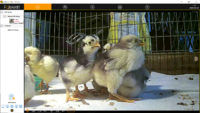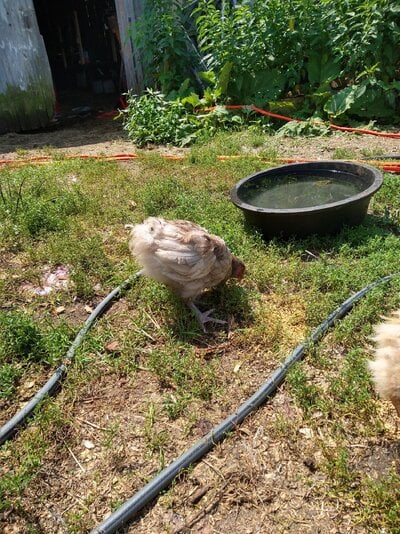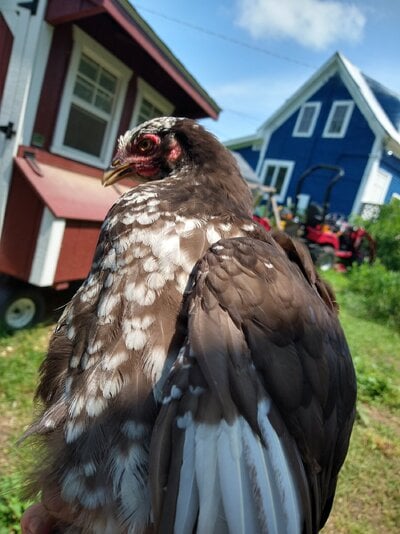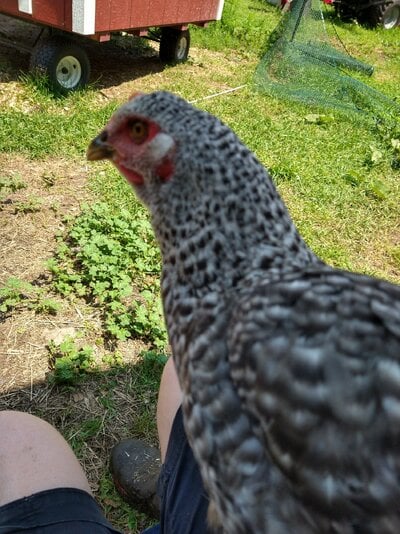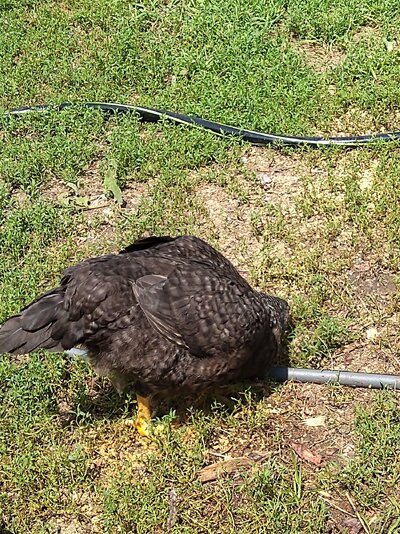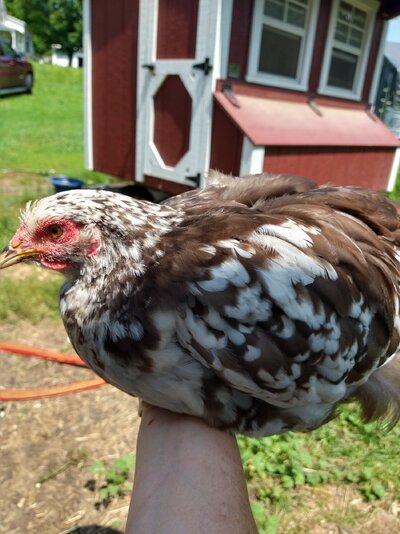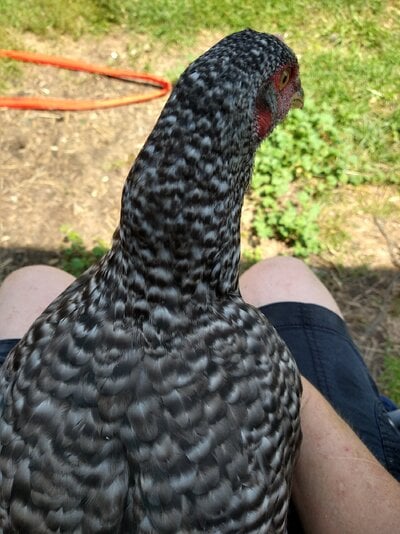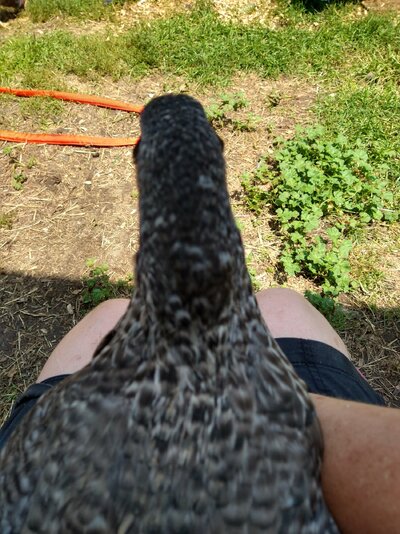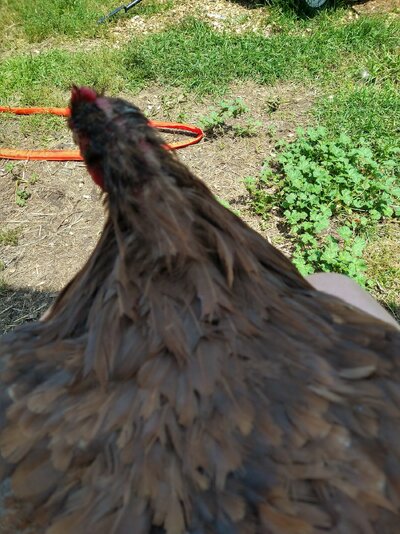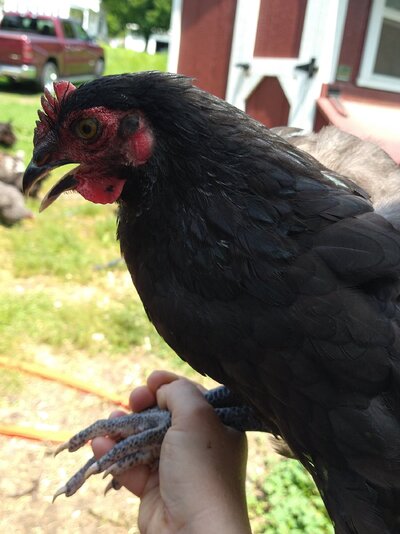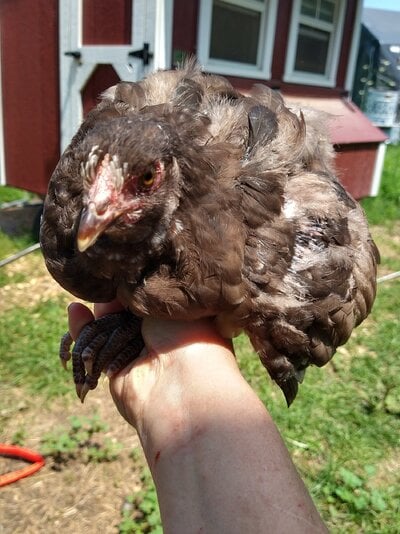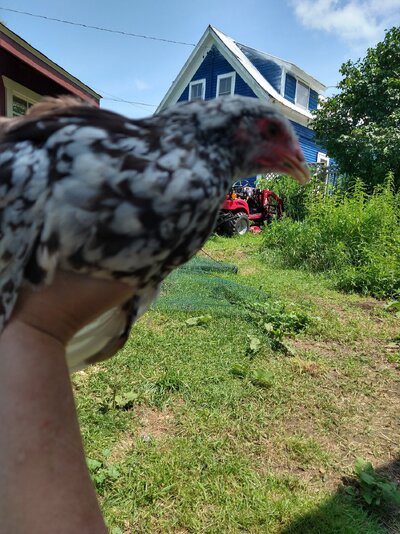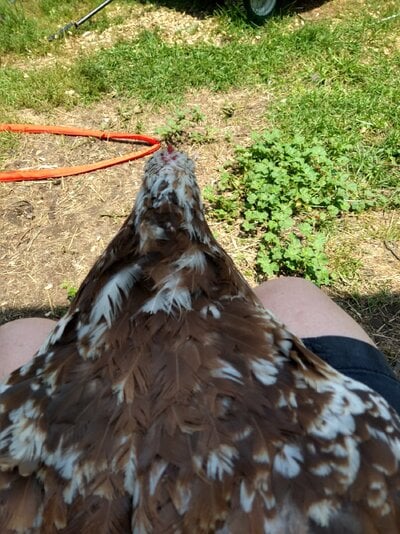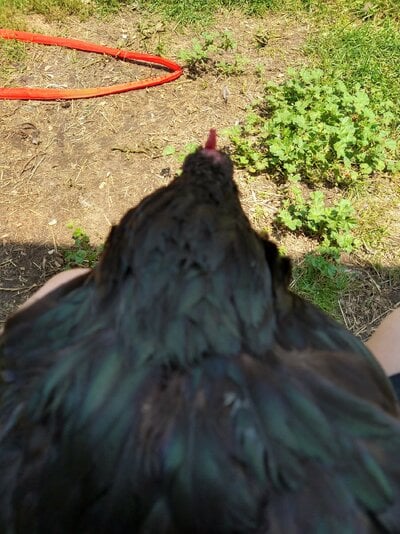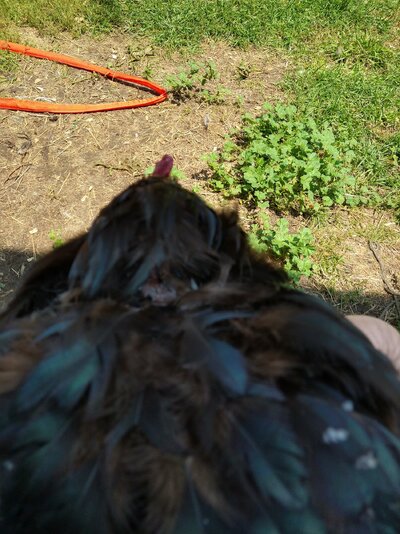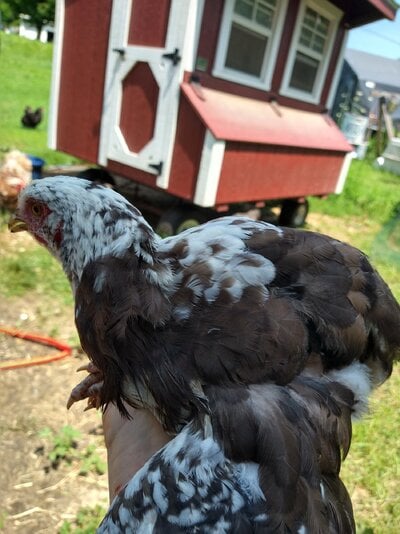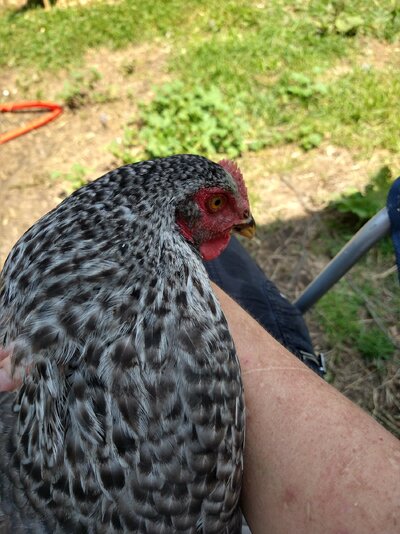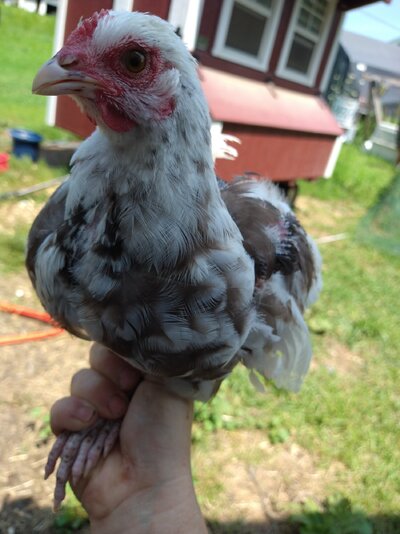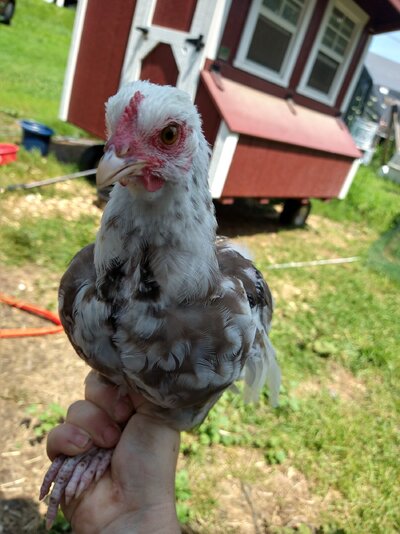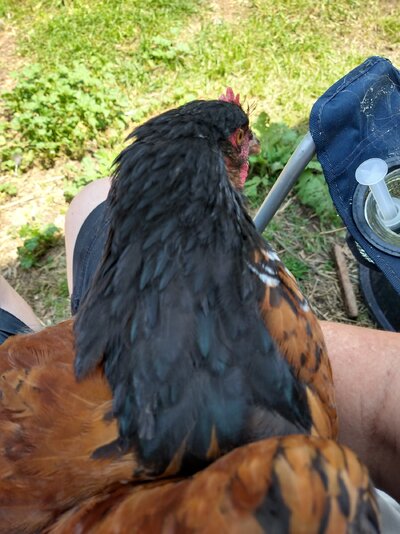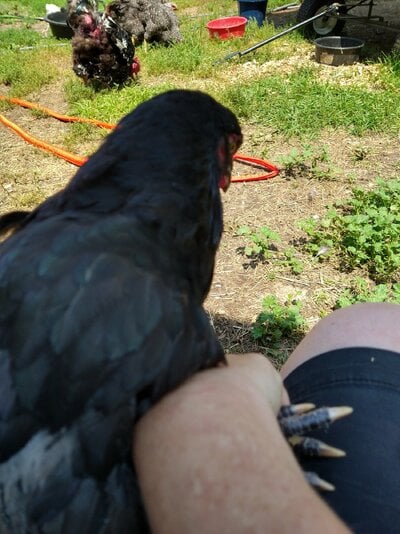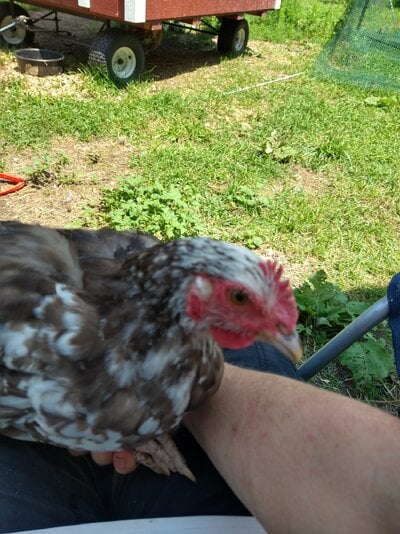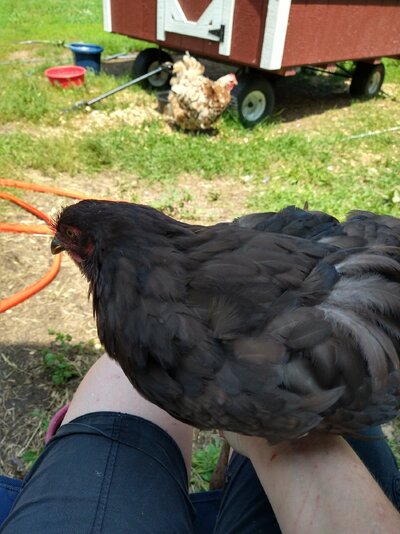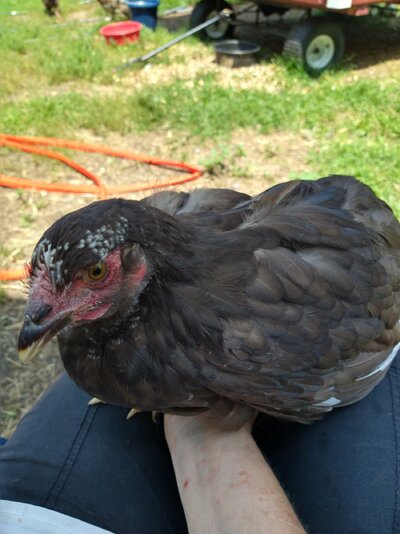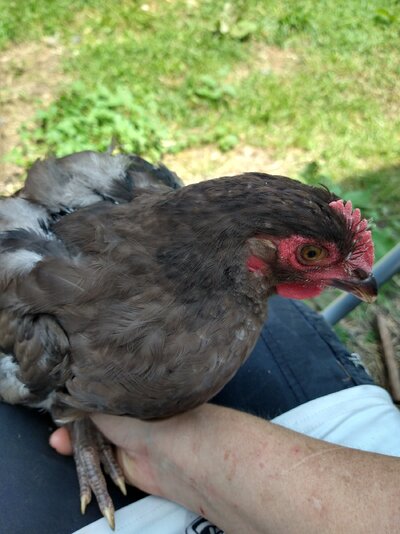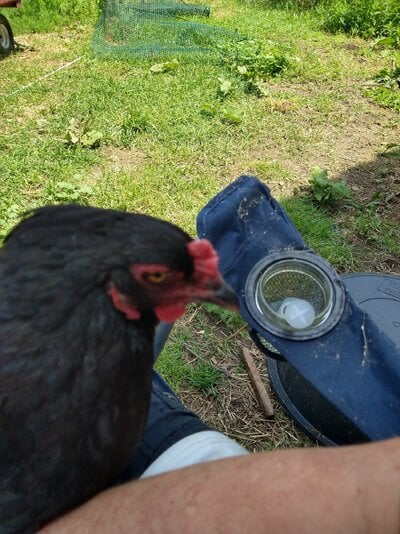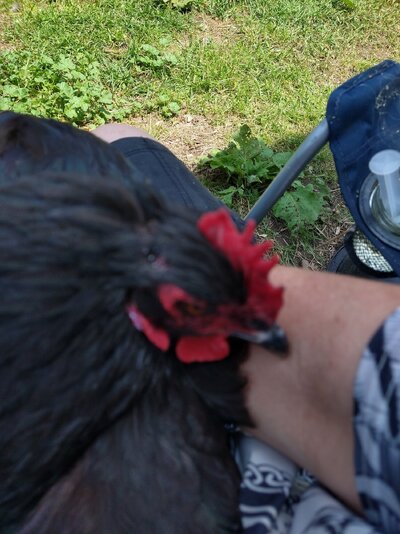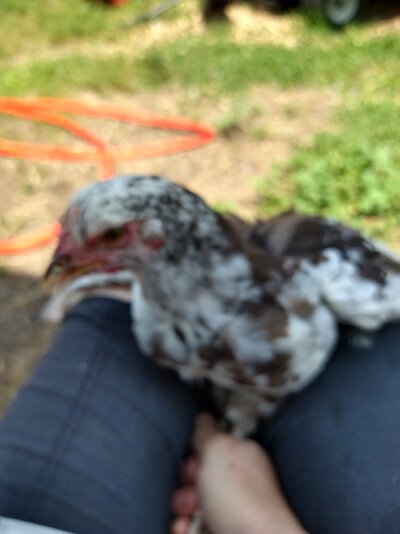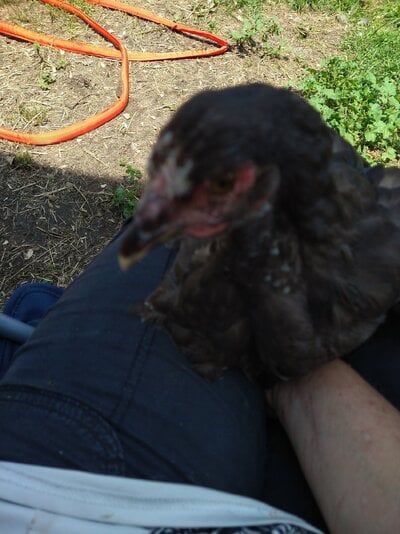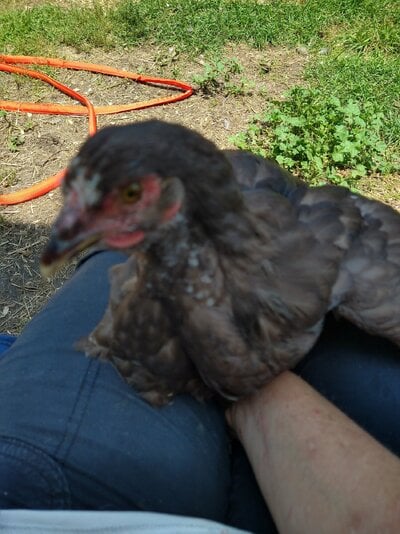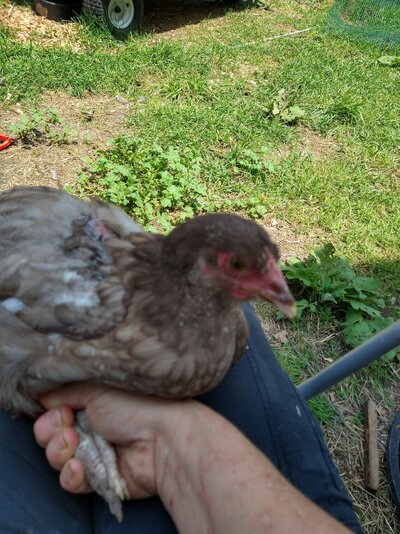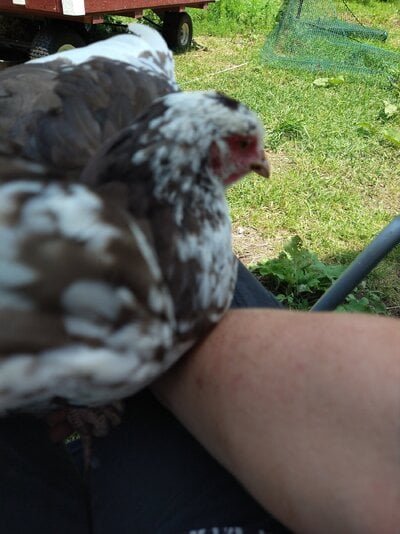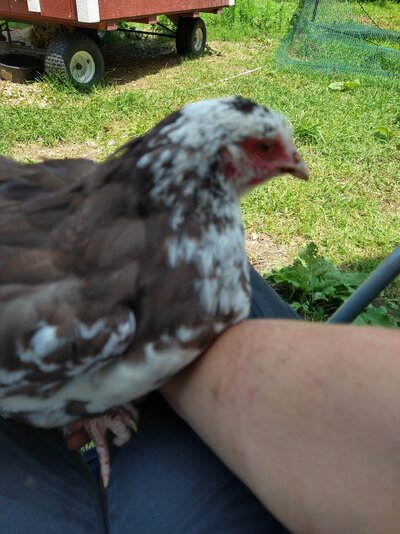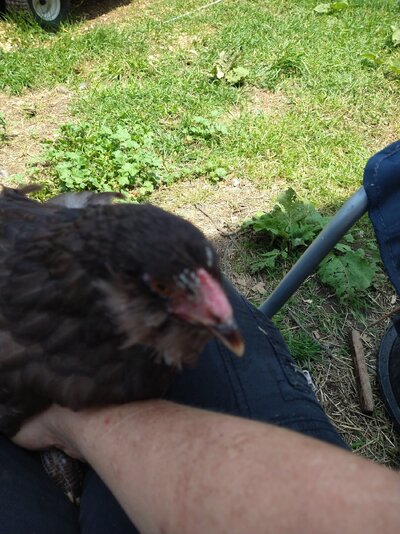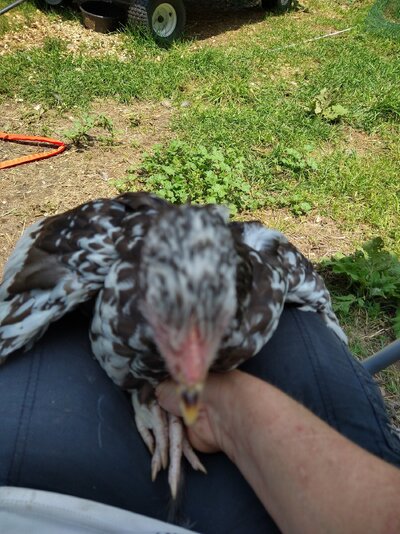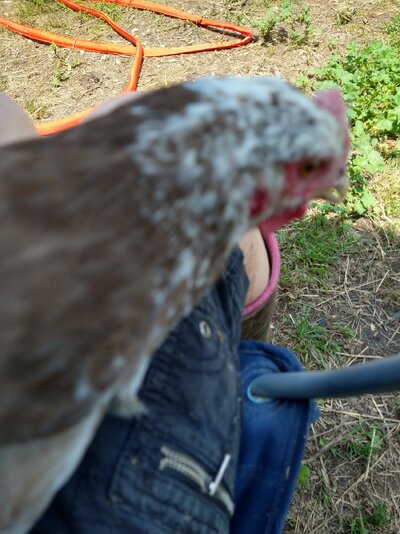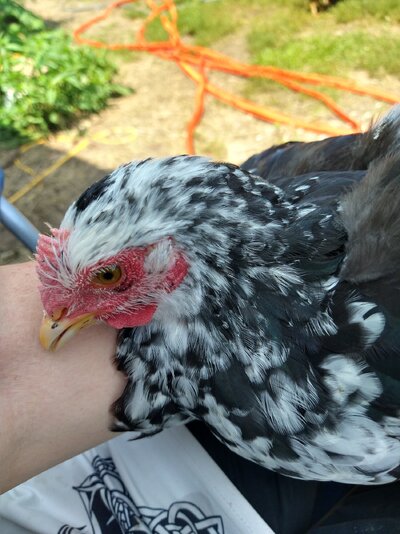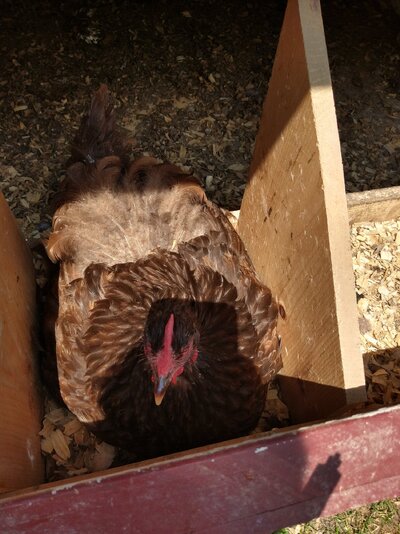Wanted to start a thread where I can post updates as I get them on my journey.
My goal is to use a dual purpose breed as a meat bird and to keep them for both eggs and meat rather than buying Cornish X every year.
I know that feed to weight ratio on an dual purpose breed will never equal that of a Cornish but for me that's not the point really. I want to work towards sustainability (the ability to continue producing year after year with the same flock without having to utilize outside sources for meat or eggs as I go) so that I don't have to rely on hatcheries or the grocery store for my meat and eggs.
I've always processed the extra roosters that I create every summer as a source of meat for myself, my family and my pets. I think that if I bring them into the world through hatching them in an incubator then it's my responsibility to humanely process them when it's time so that 1. they suffer as little as possible and 2. their deaths are not a waste since it will go to nourish and keep my family healthy. A lot of the people I talk to do similar things making sure that extra chicks are taken care of by growing them out and adding them to the freezer, but I think we can all agree that compared to a CornishX bird they leave a lot to be desired.
Recently I was reading a book that was actually originally created back in the early 1900's called The Call of the Hen by Walter Hogan. The Idea behind the book is that any breed of chickens can be good for both meat and eggs if you choose the birds that carry the traits for both as your breeders. He was revolutionary in his time and I have read and reread several parts of this book and highly recommend it as a resource for anyone working with chickens. He chose his birds primarily for egg laying characteristics in the book but said you can choose for either depending on what you need. He says that a bird that is Dual Purpose birds can work for both eggs and meat as long as you choose for both characteristics. A bird that is for both needs to have depth of chest AND also space enough in their abdomen to store all their future eggs. If you breed for a wide back end you need to watch the chest and make sure you are also choosing for a wide chest with good conditioning over the keel. For that reason a dual purpose bird should be shaped more like a rectangle in body structure than a upside down or right side up triangle.
The issue with most hatchery bred dual purpose breeds is that the hatchery is choosing the birds that lay as well as possible. In the process of choosing for depth in the abdomen to make sure that they can lay tons of eggs, they forget to look also at the chest and end up choosing birds that have very narrow chests. This gives them birds that are putting all their energy towards laying lots of eggs for them, but aren't very close to what a dual purpose breed was really meant to be.
Here are some characteristics of a good dual purpose bird.
- A dual purpose bird should have a flat long back that is also wide to give space between the end of the keel to the end of the abdomen so there is enough room for there to be equipment to make the eggs. It sounds silly to stress this but some of the hatchery cockerels I processed last fall had only about an inch between the end of their keel and their pelvis. If they were a pullet they would never lay an egg. There just isn't any room for it to move through their body. They also didn't have a pelvis that would have worked for laying either since it was very tiny and the sides of the pelvis were very close together. This would mean the minute she tried to lay an egg, if female she would probably end up egg bound and die. Natures way of making sure birds like this don't reproduce, but we need to check for the same in the roosters we choose for breeding since this can be passed down to his daughters. The pelvis should be at least three to four fingers from one side to another and both sides of the pelvis should be straight and the bones should feel fairly thin (1/4 inch thick). Hogan says that to find a bird that will be a good layer you need to look for a chicken with rounded pelvic bones that are thin and fairly straight. Birds that will be bad layers will have no depth to their abdomen and their pelvic bones will be crooked, very thick and often close together. Here is a picture of what it should look like.

- Since you want them to be good as a meat bird not just at laying you also have to look at their back and chest. Their back should be wide to give room for them to take in food and process it and their chest should be wide as well as deep. If they have a very short keel width wise and don't have room for chest muscles (breast meat) then they won't work as a meat bird. They need to carry the space on their skeletal frame for the muscling they will carry once they are grown. Basically you want their skeletal structure to be shaped like a rectangle. Space through their ribs and chest, space through their back to their tail and space between their pelvic bones.
- They need to grow quickly. You don't want to keep slow starters or birds that tend to build only bone and not muscle in their early years. Ideally we would want to process our meat birds by 30-35 weeks at the latest. A bird that is very slow to get it's feathering or generally shows a failure to thrive in any way won't work for this because they just don't meet the needs we have for growth. We need to keep the birds that grow well from the beginning AND are able to use the energy they get from feed to create muscle mass AND eggs as soon as possible once they are fully grown. We want them to thrive from the start so any who tend to get sick should not be considered for breeding since it shows a compromised immune system and a bird that may have more troubles in the future. I also want to breed for resistance to disease. I am not someone who vaccinates or purchases vaccinated poultry from the hatchery. Because of this I need to make sure that the birds I am breeding are able to STAY healthy. This means they should be less likely to get ill under normal circumstances.
- Because we want to expend as little capital as possible while raising up our birds we need birds that are healthy and robust to start with and also are geared towards foraging for their own food as much as possible. Birds that are out eating insects and grains they find in the yard all day long are saving our feed costs. Also the amount of protein in insects and worms that they dig up is great to help them grow. I try to get my babies out in the yard as soon as possible so they can learn to scratch and peck like the big chickens and learn to love eating things they find. The birds that have desire to forage and still meet the first three criteria are the ones I'm going to choose from.
- Personality is going to also be a big thing for me. I know you can have meat birds that are mean but since I will have to pick up and inspect the birds regularly to make sure they are healthy and also make sure that they fit what I am looking for for breeding. I'm going to discount right off the bat any birds that are super flighty and skittish. These aren't Orpington traits to begin with so to meet the standard for the breed I would need to cull for this as well. Orpingtons are known for being friendly and personable. The ones that I have currently are friendly and will follow me around the yard. They also aren't the type that will attack me when I go in the barn to collect eggs or change their feed. They don't have to LIKE being picked up and handled but they should tolerate it and not completely flip out when I do it. That doesn't mean that my roosters can't be protective of his ladies but he needs to be able to understand that he doesn't need to protect them from me or the other humans that live here. Any birds with mean temperaments won't be kept for breeding.
That being said everyone needs a starting point and mine was pretty shaky last fall. I started out with 5 mottled chicks and three hatchery birds. Out of those birds I had one rooster that survived to breeding age. We had a dog that ran through our yard due to an irresponsible owner in late September injuring two hens and killing another. The owner of the dog was less than sorry and kept insisting that they are just birds and laughing while my husband fumed at him for being so irresponsible. What I was left with was roosters and 4 pullets. Of the roosters three were friendly with people and good natured but not very good with the ladies and ended up injuring one of my pullets last in December by trying to breed with her. Not sure if this was because she just was a smaller bird and they were larger but she ended up with a hip injury that she couldn't come back from. That left me with three hatchery orps and one rooster.
![IMG_20200210_161937931[1].jpg IMG_20200210_161937931[1].jpg](https://www.backyardchickens.com/attachments/img_20200210_161937931-1-jpg.2026733/)
![IMG_20200210_161925230[1].jpg IMG_20200210_161925230[1].jpg](https://www.backyardchickens.com/attachments/img_20200210_161925230-1-jpg.2026734/)
![IMG_20200210_161922076[1].jpg IMG_20200210_161922076[1].jpg](https://www.backyardchickens.com/attachments/img_20200210_161922076-1-jpg.2026735/)
The rooster came close to meeting everything I was looking for. He grew well and quickly. He is already around 12lbs at less than a year old. He's a great forager taking the ladies out during the day every day even when it's downright frigid here. He's gentle when he breeds with them and not rough or mean with them. He shows a long back and wide chest and has a good space from his keel to pelvis. His pelvic spread is nice and wide and he has very good muscling. The problem lies with the ladies I was left with. All three are hatchery stock from Meyers. They all are built more towards laying eggs (they have a nice wide pelvic area and very narrow chests with fairly long thin backs).
My goals for this year are to improve on the structure in my hens by adding hens that are more similar body structure to my rooster, but still have capacity to lay well and stay healthy throughout the year. They should also meet or come close to what the standard says an Orpington should be (not necessarily color since that's not terribly important but structure and body type). I am staggering hatching in the incubator from now probably through most of the spring until the beginning of June and those will be the birds I grow out and choose from to find birds to breed for next years breeding stock. So far we have hatched 3 chicks and the incubator is full through the 15th of March so far and I'm liking the look of the chicks that have hatched so far.
My goal is to use a dual purpose breed as a meat bird and to keep them for both eggs and meat rather than buying Cornish X every year.
I know that feed to weight ratio on an dual purpose breed will never equal that of a Cornish but for me that's not the point really. I want to work towards sustainability (the ability to continue producing year after year with the same flock without having to utilize outside sources for meat or eggs as I go) so that I don't have to rely on hatcheries or the grocery store for my meat and eggs.
I've always processed the extra roosters that I create every summer as a source of meat for myself, my family and my pets. I think that if I bring them into the world through hatching them in an incubator then it's my responsibility to humanely process them when it's time so that 1. they suffer as little as possible and 2. their deaths are not a waste since it will go to nourish and keep my family healthy. A lot of the people I talk to do similar things making sure that extra chicks are taken care of by growing them out and adding them to the freezer, but I think we can all agree that compared to a CornishX bird they leave a lot to be desired.
Recently I was reading a book that was actually originally created back in the early 1900's called The Call of the Hen by Walter Hogan. The Idea behind the book is that any breed of chickens can be good for both meat and eggs if you choose the birds that carry the traits for both as your breeders. He was revolutionary in his time and I have read and reread several parts of this book and highly recommend it as a resource for anyone working with chickens. He chose his birds primarily for egg laying characteristics in the book but said you can choose for either depending on what you need. He says that a bird that is Dual Purpose birds can work for both eggs and meat as long as you choose for both characteristics. A bird that is for both needs to have depth of chest AND also space enough in their abdomen to store all their future eggs. If you breed for a wide back end you need to watch the chest and make sure you are also choosing for a wide chest with good conditioning over the keel. For that reason a dual purpose bird should be shaped more like a rectangle in body structure than a upside down or right side up triangle.
The issue with most hatchery bred dual purpose breeds is that the hatchery is choosing the birds that lay as well as possible. In the process of choosing for depth in the abdomen to make sure that they can lay tons of eggs, they forget to look also at the chest and end up choosing birds that have very narrow chests. This gives them birds that are putting all their energy towards laying lots of eggs for them, but aren't very close to what a dual purpose breed was really meant to be.
Here are some characteristics of a good dual purpose bird.
- A dual purpose bird should have a flat long back that is also wide to give space between the end of the keel to the end of the abdomen so there is enough room for there to be equipment to make the eggs. It sounds silly to stress this but some of the hatchery cockerels I processed last fall had only about an inch between the end of their keel and their pelvis. If they were a pullet they would never lay an egg. There just isn't any room for it to move through their body. They also didn't have a pelvis that would have worked for laying either since it was very tiny and the sides of the pelvis were very close together. This would mean the minute she tried to lay an egg, if female she would probably end up egg bound and die. Natures way of making sure birds like this don't reproduce, but we need to check for the same in the roosters we choose for breeding since this can be passed down to his daughters. The pelvis should be at least three to four fingers from one side to another and both sides of the pelvis should be straight and the bones should feel fairly thin (1/4 inch thick). Hogan says that to find a bird that will be a good layer you need to look for a chicken with rounded pelvic bones that are thin and fairly straight. Birds that will be bad layers will have no depth to their abdomen and their pelvic bones will be crooked, very thick and often close together. Here is a picture of what it should look like.
- Since you want them to be good as a meat bird not just at laying you also have to look at their back and chest. Their back should be wide to give room for them to take in food and process it and their chest should be wide as well as deep. If they have a very short keel width wise and don't have room for chest muscles (breast meat) then they won't work as a meat bird. They need to carry the space on their skeletal frame for the muscling they will carry once they are grown. Basically you want their skeletal structure to be shaped like a rectangle. Space through their ribs and chest, space through their back to their tail and space between their pelvic bones.
- They need to grow quickly. You don't want to keep slow starters or birds that tend to build only bone and not muscle in their early years. Ideally we would want to process our meat birds by 30-35 weeks at the latest. A bird that is very slow to get it's feathering or generally shows a failure to thrive in any way won't work for this because they just don't meet the needs we have for growth. We need to keep the birds that grow well from the beginning AND are able to use the energy they get from feed to create muscle mass AND eggs as soon as possible once they are fully grown. We want them to thrive from the start so any who tend to get sick should not be considered for breeding since it shows a compromised immune system and a bird that may have more troubles in the future. I also want to breed for resistance to disease. I am not someone who vaccinates or purchases vaccinated poultry from the hatchery. Because of this I need to make sure that the birds I am breeding are able to STAY healthy. This means they should be less likely to get ill under normal circumstances.
- Because we want to expend as little capital as possible while raising up our birds we need birds that are healthy and robust to start with and also are geared towards foraging for their own food as much as possible. Birds that are out eating insects and grains they find in the yard all day long are saving our feed costs. Also the amount of protein in insects and worms that they dig up is great to help them grow. I try to get my babies out in the yard as soon as possible so they can learn to scratch and peck like the big chickens and learn to love eating things they find. The birds that have desire to forage and still meet the first three criteria are the ones I'm going to choose from.
- Personality is going to also be a big thing for me. I know you can have meat birds that are mean but since I will have to pick up and inspect the birds regularly to make sure they are healthy and also make sure that they fit what I am looking for for breeding. I'm going to discount right off the bat any birds that are super flighty and skittish. These aren't Orpington traits to begin with so to meet the standard for the breed I would need to cull for this as well. Orpingtons are known for being friendly and personable. The ones that I have currently are friendly and will follow me around the yard. They also aren't the type that will attack me when I go in the barn to collect eggs or change their feed. They don't have to LIKE being picked up and handled but they should tolerate it and not completely flip out when I do it. That doesn't mean that my roosters can't be protective of his ladies but he needs to be able to understand that he doesn't need to protect them from me or the other humans that live here. Any birds with mean temperaments won't be kept for breeding.
That being said everyone needs a starting point and mine was pretty shaky last fall. I started out with 5 mottled chicks and three hatchery birds. Out of those birds I had one rooster that survived to breeding age. We had a dog that ran through our yard due to an irresponsible owner in late September injuring two hens and killing another. The owner of the dog was less than sorry and kept insisting that they are just birds and laughing while my husband fumed at him for being so irresponsible. What I was left with was roosters and 4 pullets. Of the roosters three were friendly with people and good natured but not very good with the ladies and ended up injuring one of my pullets last in December by trying to breed with her. Not sure if this was because she just was a smaller bird and they were larger but she ended up with a hip injury that she couldn't come back from. That left me with three hatchery orps and one rooster.
The rooster came close to meeting everything I was looking for. He grew well and quickly. He is already around 12lbs at less than a year old. He's a great forager taking the ladies out during the day every day even when it's downright frigid here. He's gentle when he breeds with them and not rough or mean with them. He shows a long back and wide chest and has a good space from his keel to pelvis. His pelvic spread is nice and wide and he has very good muscling. The problem lies with the ladies I was left with. All three are hatchery stock from Meyers. They all are built more towards laying eggs (they have a nice wide pelvic area and very narrow chests with fairly long thin backs).
My goals for this year are to improve on the structure in my hens by adding hens that are more similar body structure to my rooster, but still have capacity to lay well and stay healthy throughout the year. They should also meet or come close to what the standard says an Orpington should be (not necessarily color since that's not terribly important but structure and body type). I am staggering hatching in the incubator from now probably through most of the spring until the beginning of June and those will be the birds I grow out and choose from to find birds to breed for next years breeding stock. So far we have hatched 3 chicks and the incubator is full through the 15th of March so far and I'm liking the look of the chicks that have hatched so far.

